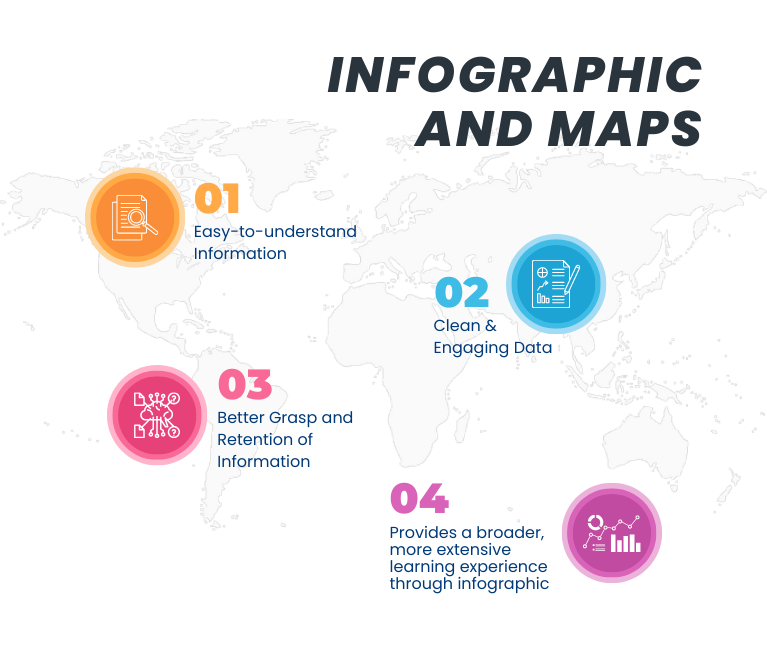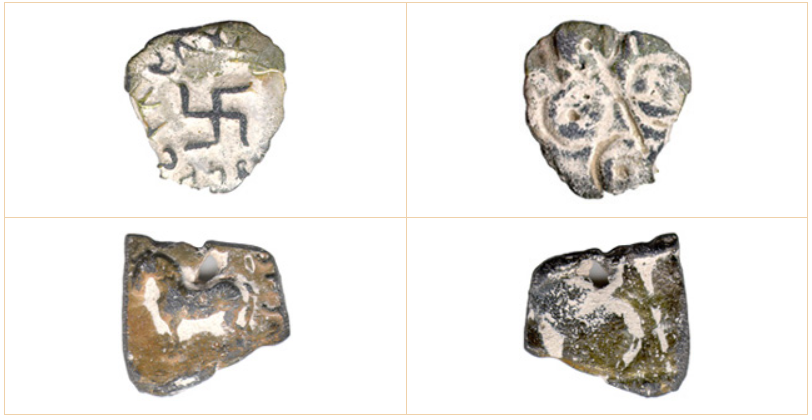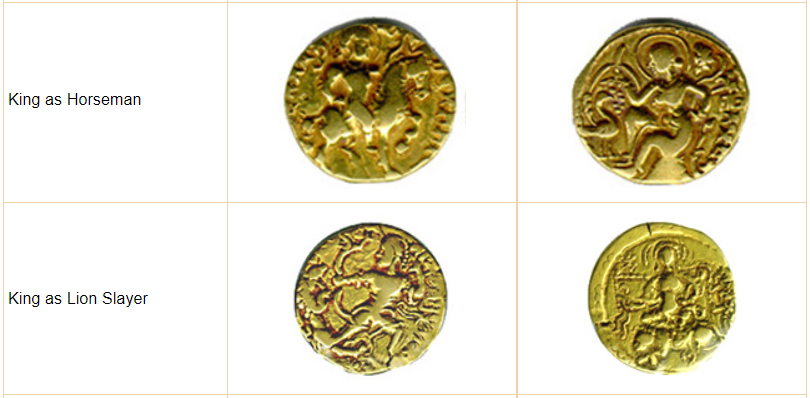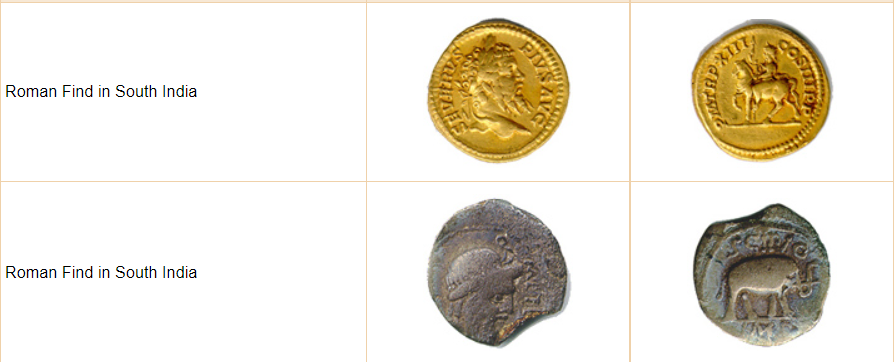Infographics
Indian Economy
Internationalisation of Rupee
For Prelims: RBI, Internationalisation of Rupee, Monetary Policy
For Mains: Internationalisation of Rupee and related issues, Growth & Development
Why in News?
A deputy governor of the Reserve Bank of India (RBI) recently emphasized the advantages and risks of the internationalization of the rupee.
What is Internationalisation of Rupee?
- Internationalisation of the rupee is a process that involves increasing use of the local currency in cross-border transactions.
- It involves promoting the rupee for import and export trade and then other current account transactions followed by its use in capital account transactions.
- As far as the rupee is concerned, it is fully convertible in the current account, but partially in capital account.
- Current and Capital account are the two components of Balance of payments. While the current account deals mainly with the import and export of goods and services, the capital account is made up of the cross-border movement of capital by way of investments and loans.
Why is the Need for Internationalisation of Rupee?
- The dollar accounts for 88.3% of global foreign exchange market turnover, followed by the euro, Japanese Yen and Pound Sterling; the rupee accounts for a mere 1.7%, underlining the need for pushing the currency much farther to get an international tag.
- In the case of the dollar, which is an international currency, the ‘exorbitant’ privileges include immunity from Balance of Payments crises as the USA can pay for its external deficits with its own currency.
What are the Various Advantages of Internationalisation of the Rupee?
- Use of Rupee in cross-border transactions mitigates currency risk for Indian business. Protection from currency volatility not only reduces cost of doing business, it also enables better growth of business, improving the chances for Indian business to grow globally.
- It reduces the need for holding foreign exchange reserves. While reserves help manage exchange rate volatility and project external stability, they impose a cost on the economy.
- Reducing dependence on foreign currency makes India less vulnerable to external shocks. For example, during phases of monetary tightening in US and strengthening dollar, excessive foreign currency liabilities of domestic business results in a de facto domestic tightening. Reduced exposure to currency risk would substantially mitigate the pain of reversal of capital flows.
- As the use of Rupee becomes significant, the bargaining power of Indian business would improve adding weight to the Indian economy, enhancing India’s global stature and respect.
What are the Challenges in Internationalisation of Rupee?
- India is a capital deficient country, and hence needs foreign capital to fund its growth. If a substantial portion of its trade is in Rupee, non-residents would hold Rupee balances in India which would be used to acquire Indian assets. Large holdings of such financial assets could heighten vulnerability to external shocks, managing which would necessitate more effective policy tools.
- A reduced role for convertible currencies in external transactions could lead to reduced reserve accretion. At the same time, however, the need for reserves would also reduce to the extent the trade deficit is funded in Rupees.
- Non-resident holdings of Rupees could exacerbate pass-through of external stimulus to domestic financial markets, increasing volatility. For instance, a global risk-off phase could lead non-residents to convert their Rupee holdings and move out of India.
What are the Steps taken for the Internationalisation of the Rupee?
- In July, 2022 the RBI has introduced a mechanism to facilitate international trade in rupees.
- Enabling external commercial borrowings in Rupees (especially Masala Bonds).
- The Asian Clearing Union is also exploring a scheme of using domestic currencies for settlement. An arrangement, bilateral or among trading blocs, which offers importers of each country the choice to pay in domestic currency is likely to be favoured by all countries, and therefore, is worth exploring.
Way Forward
- The recent initiative of invoicing trade in rupee comes from a different global requirement and order, but for true internationalisation and wider use of the rupee overseas, opening up of trade settlement in rupee alone will not suffice. Further opening up and liberalised settlements in rupee for various financial instruments both in India and overseas markets are more important.
- Rupee internationalization may also require an efficient swap market and a strong foreign exchange market.
- Further improvement in overall economic fundamentals, financial sector health, followed by an upward movement in sovereign ratings will also strengthen confidence in the rupee, making the currency ready for the next step in its international journey.
UPSC Civil Services Examination Previous Year Question
Q. Convertibility of rupee implies (2015)
(a) being able to convert rupee notes into gold
(b) allowing the value of rupee to be fixed by market forces
(c) freely permitting the conversion of rupee to other currencies and vice versa
(d) developing an international market for currencies in India
Ans: (c)
Q. With reference to Balance of Payments, which of the following constitutes/constitute the Current Account? (2014)
- Balance of trade
- Foreign assets
- Balance of invisibles
- Special Drawing Rights
Select the correct answer using the code given below:
(a) 1 only
(b) 2 and 3
(c) 1 and 3
(d) 1, 2 and 4
Ans: (c)
Source: IE

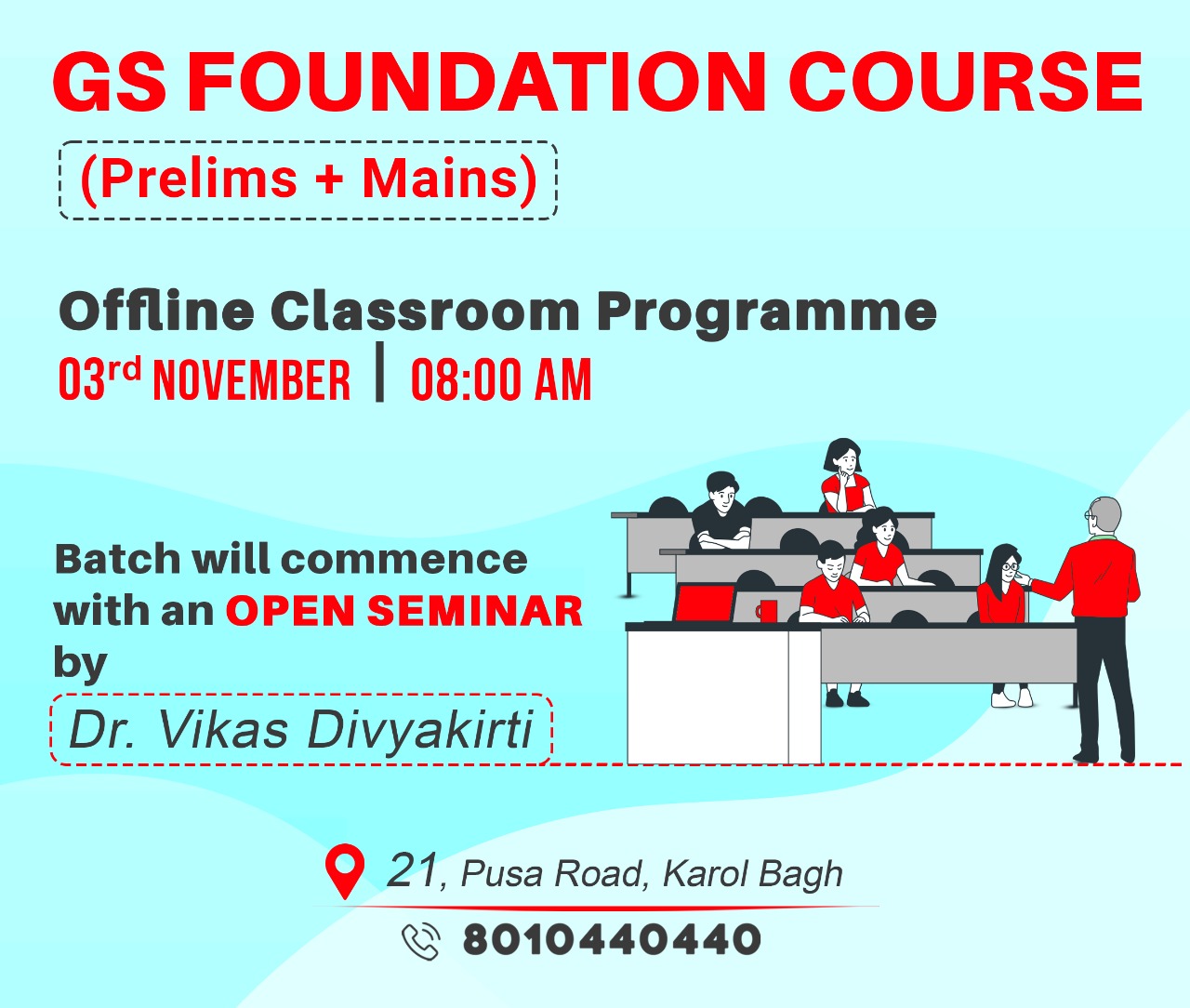
Agriculture
Commercial Cultivation of GM Mustard
For Prelims: Genetic Engineering Appraisal Committee (GEAC), Genetically Modified (GM) mustard, Dhara Mustard Hybrid (DMH-11), Centre for Genetic Manipulation of Crop Plants.
For Mains: GM Crops and their significance.
Why in News?
Recently, the Genetic Engineering Appraisal Committee (GEAC) that functions under the Union Ministry of Environment, Forest and Climate Change has approved seed production prior to commercial release of genetically modified (GM) mustard.
What are Genetically Modified (GM) Crops?
- About:
- GM crops are derived from plants whose genes are artificially modified, usually by inserting genetic material from another organism, in order to give it new properties, such as increased yield, tolerance to a herbicide, resistance to disease or drought, or improved nutritional value.
- Probably the best-known variety of GM rice is golden rice.
- Golden rice involves the insertion of genes from a plant - both daffodils and maize have been used - and a soil bacterium to create a grain that is enriched with Vitamin A.
- Earlier, India approved the commercial cultivation of only one GM crop, Bt cotton, but GEAC has recommended GM Mustard for commercial use.
- Advantages:
- Increased Yield: Genetically modified seeds dramatically increase the yield of the plant. This means that with the same plot of land, a farmer can now produce noticeably more crops.
- Beneficial in Specific Climates: Genetically modified seeds can also be produced for specific conditions or climates. For example, drought-resistant seeds can be used in places with little water to ensure healthy crop growth.
- Disadvantages:
- Manipulation of Seeds Cost: Only a few companies are in charge of creating and selling modified seeds. With a near monopoly, this means that there are few choices available to those buying seeds.
- Seeds can’t be Replanted: Genetically modified seeds do not create viable seed offspring by design. This means that every time you want to plant a new crop, you have to go to the company you originally bought the seeds from.
- Environmental Concern: They can decrease species diversity. For example, insect-resistant plants might harm insects that are not their intended target and destroy that particular insect species.
- Ethical Concern: GM crop is the violation of natural organisms’ intrinsic values by mixing among species.
- There have also been concerns of mixing animal genes in plants.
What is GM Mustard?
- About:
- Dhara Mustard Hybrid (DMH-11) is an indigenously developed transgenic mustard. It is a genetically modified variant of Herbicide Tolerant (HT) mustard.
- It contains two alien genes (‘barnase’ and ‘barstar’) isolated from a soil bacterium called Bacillus amyloliquefaciens that enable breeding of high-yielding commercial mustard hybrids.
- It has been developed by the Centre for Genetic Manipulation of Crop Plants (CGMCP) at Delhi University.
- In 2017, the GEAC recommended the commercial approval of the HT Mustard crop. However, the Supreme Court stayed its release and asked the central government to seek public opinion.
- Significance: India produces only 8.5-9 million tonnes (mt) of edible oil annually while it imports 14-14.5 mt which entailed a record foreign exchange outgo of USD 18.99 billion in the fiscal year ended March 31, 2022. Further, GM mustard would make India self-reliant in oil production and help in saving forex.
- Mustard varieties in India have a narrow genetic base. The barnase-barstar system enables breeding of hybrids from a wider range of mustards, including those of East European origin such as ‘Heera’ and ‘Donskaja’.
What is the Status of other GM Crops in India?
- BT Cotton:
- In order to tackle the bollworm attack that had devastated cotton crops in the past, Bt cotton was introduced which was jointly developed by the Maharashtra Hybrid Seeds Company (Mahyco) and the US seed company Monsanto.
- In 2002, the GEAC approved Bt Cotton for commercial cultivation in 6 states such as Andhra Pradesh, Gujarat, Karnataka, Madhya Pradesh, Maharashtra, and Tamil Nadu. It has to be noted that, Bt cotton is the first and only transgenic crop approved by the GEAC.
- BT Brinjal:
- Mahyco jointly developed Bt Brinjal with the Dharwad University of Agricultural Sciences and the Tamil Nadu Agricultural University.
- Even though GEAC 2007 had recommended the commercial release of Bt Brinjal, the initiative was blocked in 2010.
What is Genetic Engineering Appraisal Committee (GEAC)?
- It is responsible for the appraisal of activities involving large-scale use of hazardous microorganisms and recombinants in research and industrial production from the environmental angle.
- The committee is also responsible for the appraisal of proposals relating to the release of genetically engineered (GE) organisms and products into the environment including experimental field trials.
- GEAC is chaired by the Special Secretary/Additional Secretary of MoEF&CC and co-chaired by a representative from the Department of Biotechnology (DBT).
Way Forward
- Rigorous monitoring is needed to ensure that safety protocols are followed strictly, and enforcement must be taken seriously to prevent the spread of illegal GM crops.
- Further, Environmental impact assessment should be carried out by independent environmentalists, as farmers do not and cannot assess the long-term impact of GM crops on ecology and health.
UPSC Civil Services Examination Previous Year Question
Prelims:
Q. Other than resistance to pests, what are the prospects for which genetically engineered plants have been created? (2012)
- To enable them to withstand drought
- To increase the nutritive value of the produce
- To enable them to grow and do photosynthesis in spaceships and space stations
- To increase their shelf life
Select the correct answer using the codes given below:
(a) 1 and 2 only
(b) 3 and 4 only
(c) 1, 2 and 4 only
(d) 1, 2, 3 and 4
Ans: C
- Genetically modified crops (GM crops or biotech crops) are plants used in agriculture, the DNA of which has been modified using genetic engineering methods. In most cases, the aim is to introduce a new trait to the plant which does not occur naturally in the species. Examples of traits in food crops include resistance to certain pests, diseases, environmental conditions, reduction of spoilage, resistance to chemical treatments (e.g., resistance to a herbicide), or improving the nutrient profile of the crop.
- Some potential applications of GM crop technology are:
- Nutritional enhancement – Higher vitamin content; more healthful fatty acid profiles; Hence, 2 is correct.
- Stress Tolerance – Tolerance to high and low temperatures, salinity, and drought; Hence, 1 is correct.
- There is no such prospect that enables GM crops to grow and do photosynthesis in spaceships and space stations. Hence, 3 is not correct.
- Scientists have been able to create certain genetically modified crops which stay fresh for a month longer than usual. Hence, 4 is correct. Therefore, option (c) is the correct answer.
Q. Bollgard I and Bollgard II technologies are mentioned in the context of
(a) clonal propagation of crop plants
(b) developing genetically modified crop plants
(c) production of plant growth substances
(d) production of biofertilizers
Ans: B
- Bollgard I Bt cotton (single-gene technology) is first biotech crop technology approved for commercialization in India in 2002, followed by Bollgard II- double-gene technology in mid-2006, by the Genetic Engineering Approval Committee, the Indian regulatory body for biotech crops.
- Bollgard I cotton is an insect-resistant transgenic crop designed to combat the bollworm. It was created by genetically altering the cotton genome to express a microbial protein from the bacterium Bacillus thuringiensis.
- Bollgard II technology contains a superior doublegene technology - Cry1Ac and Cry2Ab, which provides protection against bollworms and Spodoptera caterpillar, leading to better boll retention, maximum yield, lower pesticides costs, and protection against insect resistance.
- Both Bollgard I and Bollgard II insect-protected cotton is widely planted around the world as an environmentally friendly way of controlling bollworms. Therefore, option (b) is the correct answer.
Mains:
Q. How can biotechnology help to improve the living standards of farmers? (2019)
Source: TH

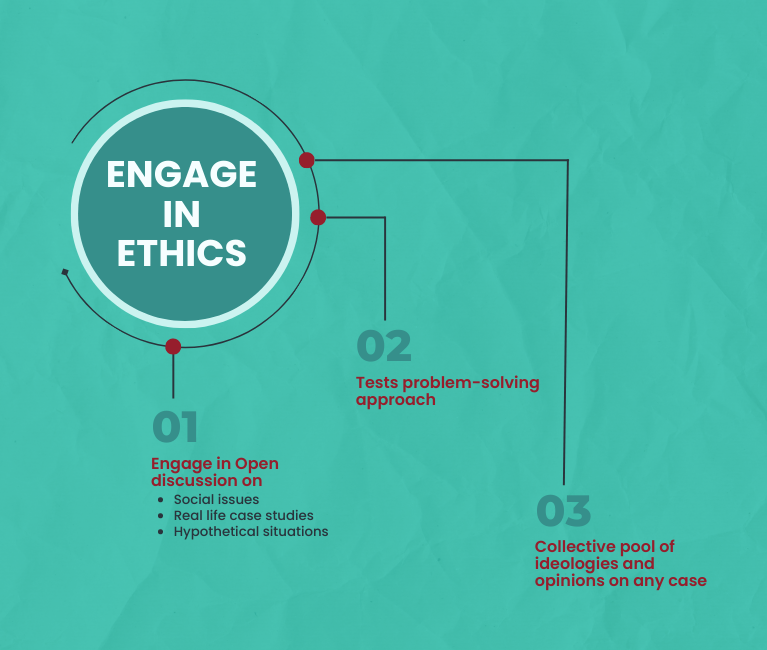
International Relations
Pakistan Removed from FATF Grey List
For Prelims: FATF, Grey List, Black List, G7, OECD, European Commission, Gulf Cooperation Council
For Mains: FATF - Grey List and Black List, Efficiency of FATF in combatting terrorism and money laundering, Pakistan’s removal from FATF Grey List and its implications on India
Why in News?
Recently, the Financial Action Task Force (FATF), the international watchdog on terror financing and money laundering, has removed Pakistan from the list of countries under “increased monitoring” (Grey List).
- India’s other neighbour on the grey list, Myanmar, was moved to the “black list” due to actions by the military leadership after the 2021 coup.
What is the FATF?
- About:
- FATF is the global money laundering and terrorist financing watchdog. It also aims to counter the financing of proliferation of weapons of mass destruction.
- It was set up in 1989 out of a G-7 meeting of developed nations in Paris.
- Its Secretariat is located at the Organisation for Economic Cooperation and Development (OECD) headquarters in Paris.
- Members:
- As of today, it is a 39-member body with 37 countries and two regional organisations: the European Commission, and the Gulf Cooperation Council.
- Indonesia is the only observer country of FATF.
- India joined with ‘observer’ status in 2006 and became a full member of FATF in 2010.
- India is also a member of its regional partners, the Asia Pacific Group (APG) and the Eurasian Group (EAG).
- As of today, it is a 39-member body with 37 countries and two regional organisations: the European Commission, and the Gulf Cooperation Council.
- Greylisting and Blacklisting Countries:
- The FATF Plenary (decision-making body of the FATF) meets tri-annually - in February, June and October, to take stock of “Mutual Evaluation Reports” (MERs) of the countries it reviews.
- If a country appears to have major deficiencies in its AML/CFT regime, it is put on a list of “jurisdictions under increased monitoring” - “grey list” and if it fails to address FATF concerns, it is put on a “high-risk jurisdictions” list - “black list”.
- AML/CFT refers to “Anti-Money Laundering/Combating the Financing of Terrorism”.
- The Grey List includes countries that are considered safe haven for supporting terror funding and money laundering. It serves as a warning that the country may enter the blacklist.
- The Black List includes Non-Cooperative Countries or Territories (NCCTs) that support terror funding and money laundering activities. As of now, Iran, North Korea and Myanmar are the three black listed countries.
- The enlisted countries are subjected to increased financial structures, thus making it difficult for them to procure loans from the financial institutions affiliated to FATF (as observers) such as the IMF, World Bank etc.
What are the Key Points about Pak’s Removal from the Grey List?
- FATF’s Stand: The FATF lauded “Pakistan’s significant progress” saying that the country had completed two action plans comprising a 34-point tasklist in the period since 2018.
- Pakistan has been removed from the list after four years. It was first put on the list in 2008, removed in 2009 and before adding it again in 2018, it remained under increased monitoring from 2012 to 2015.
- India’s Response: India has protested Pakistan’s lack of action against cross-border terror groups responsible for attacks on India, however, it agreed to the decision to take Pakistan off the list, as the latter had submitted “documentary evidence” of its actions against designated terrorists.
- India believes that Pakistan must continue to take “credible, verifiable, irreversible and sustainable” action against terror groups emanating from territories under its control.
What are the Implications of Removing Pakistan from the List?
- For Pakistan: Being removed from the grey list, Pakistan has essentially received a reputational boost and a clean bill of health from the international community on terrorist financing.
- Considering the current situation of the country’s economy, it is essentially in desperate need of investments from other countries. Removal from the grey list will definitely do the deed in this context.
- For India: While four years of greylisting has scaled-down the cross-border terror, the occasional incidents of terrorists infiltration and the regular sightings of drones bearing weapon-payloads along the border suggest that Pakistan’s terrorism infrastructure directed against India is presently in a recessed mode but far from being dismantled comprehensively.
- India will have to continue mustering all available instruments and options to deny Pakistan operating space to wield the terror-weapon.
- India’s interests lie in playing the long game in these diplomatic battles with the goal of making the region more stable and secure.
Source: IE


Biodiversity & Environment
Impact of Heatwaves on Children: UNICEF
For Prelims: UNICEF, COP-27, Heatwaves, Climate Change, UNFCCC.
For Mains: Impact of Heatwaves on Children.
Why in News?
Recently, UNICEF (United Nations Children’s Fund) released a report titled “Coldest Year of the Rest of Their Lives - Protecting children from the escalating impacts of heatwaves”, showing that nearly all the children across the world will be exposed to more frequent and severe heat waves by 2050.
- UNICEF is a special program of the United Nations (UN) devoted to aiding national efforts to improve the health, nutrition, education, and general welfare of children.
What are the Findings of the UNICEF Report?
- Current Scenario:
- Around 559 million children are exposed to high heatwave frequency and around 624 million children are exposed to one of three other high heat measures - High heatwave duration, High heatwave severity and Extreme high temperatures.
- One in four children lives in areas where the average heatwave event lasts 4.7 days or longer as of 2020.
- This percentage will rise to over three in four children under a low-emission scenario by 2050.
- Children in southern, western and south-eastern Asia, eastern and southern Europe and northern Africa experience heatwaves of longer duration.
- Future Impact:
- The number of children exposed to high heat waves will quadruple to over two billion by 2050 — up from 24% of children in 2020.
- This amounts to an increase of about 1.5 billion children.
- Virtually every child on earth will face severe heat waves even under a low greenhouse gas emission scenario — with an estimated 1.7°C of warming in 2050.
- At 2.4 degrees of warming, 94% of children will be exposed with only small areas of southern America, central Africa, Australasia and Asia not exposed to high heatwave duration.
- The number of children exposed to high heat waves will quadruple to over two billion by 2050 — up from 24% of children in 2020.
- Higher Vulnerability of Children:
- Heat Waves with longer duration pose more risks for children as they spend more time outdoors than adults for — sports and other activities — putting them at greater risk for heat injury.
- Impact on Health:
- High temperatures are linked to increased mental health problems in children and adolescents, including post-traumatic stress disorder (PTSD) and depression.
- Extreme heat will essentially affect children’s education and future livelihoods.
- Heatwave risks to health include — heat stroke, heat stress, allergy, chronic respiratory conditions, asthma, mosquito-borne disease, cardiovascular disease, undernutrition and diarrhoea.
- Threatens Children's Safety:
- Communities are forced to search for and compete over food and water resources as pastures and household income dry up. The resulting migration, displacement and conflict expose children to serious physical harm and violence risks.
Note:
- In July 2022, the UN-backed agencies issued guidelines to provide the first-ever global policy framework to protect children displaced due to climate change.
- It contains a set of nine principles that address the unique vulnerabilities of children who have been uprooted.
- The principles are based on the Convention on the Rights of the Child and are informed by existing operational guidelines and frameworks.
What are the Recommendations?
- There is a need to ensure that the vulnerable have the resources to adopt the critical social services required to protect them.
- It is high time Countries must act now by:
- Protecting children from climate devastation by encouraging social services
- Preparing children to live in a climate-changed world
- Prioritising children and youth in climate finance and resources
- Preventing a climate catastrophe by reducing greenhouse gas emissions
- The 27th Conference of Parties (COP-27) to the United Nations Framework Convention on Climate Change must unlock progress on loss and damage, placing the resilience of children and their communities at the centre of discussions on action and support.
What are the Other Related Indices?
- Children’s Climate Risk Index: UNICEF:
- It ranks countries based on children’s exposure to climate and environmental shocks, such as Cyclones and Heatwaves, as well as their vulnerability to those shocks, based on their access to essential services.
- Notre Dame Global Adaptation Initiative (ND-GAIN) Index:
- It has shown the impact of climate change on children across the world.
- It explains that the children will be impacted by food shortages, diseases and other health threats, water scarcity, or be at risk from rising water levels – or a combination of these factors.
UPSC Civil Services Examination Previous Year Question
Q. With reference to the United Nations Convention on the Rights of the Child, consider the following: (2010)
- The Right to Development
- The Right to Expression
- The Right to Recreation
Which of the above is/are the Rights of the child?
(a) 1 only
(b) 1 and 3 only
(c) 2 and 3 only
(d) 1, 2 and 3
Ans: (d)
Source: DTE


Indian History
Evolution of Coinage System in India
For Prelims: Coinage System in India, Coins of Ancient and Modern India
For Mains: Evolution of Coinage System in India, Salient Features of Coinage System of Ancient and Modern India
Why in News?
Recently, the Government of NCT of Delhi has appealed to the Prime Minister of India to have images of Goddess Lakshmi and Lord Ganesh printed on the new currency notes.
- India has a long tradition of coinage with images of gods and goddesses. The Kushans, who ruled till 3rd century AD, were the first to use the image of Goddess Lakshmi on their coins.
What has been the History of Coinage in India?
- Punch Marked Coins:
- The first documented coinage is deemed to start with 'Punch Marked' coins issued between the 7th-6th century BC and 1st century AD.
- These coins are called 'punch-marked' coins because of their manufacturing technique. Mostly made of silver, these bear symbols, each of which was punched on the coin with a separate punch.
- They are broadly classified into two periods:
- The first period is attributed to the Janapadas or small local states.
- The second period is attributed to the Imperial Mauryan period.
- The motifs found on these coins were mostly drawn from nature like the sun, various animal motifs, trees, hills etc.
- Dynastic Coins:
- The earliest of these coins relate to those of the Indo-Greeks, the Saka-Pahlavas and the Kushans. These coins are generally placed between the 2nd century BC and 2nd century AD.
- Indo Greeks:
- Hellenistic traditions characterise the silver coins of the Indo-Greeks, with Greek gods and goddesses figuring prominently, apart from the portraits of the issuers.
- Sakas:
- The Saka coinage of the Western Kshatrapas are perhaps the earliest dated coins, the dates being given in the Saka era which commences in AD 78.
- The Saka era represents the official calendar of the Indian Republic.
- Kushans:
- Kushans, who hailed from the Central Asian region depicted Oesho (Shiva), moon deity Miro and Buddha in their coinage.
- Earliest Kushan coinage is generally attributed to Vima Kadphises.
- The Kushan coins generally depicted iconographic forms drawn from Greek, Mesopotamian, Zorastrian and Indian mythology.
- Siva, Buddha and Kartikeya were the major Indian deities portrayed.
-
- Satavahana:
- The dates of their coming into power are contentious and are variously put between 270 BC to 30 BC.
- Their coins were predominantly of copper and lead; however, silver issues are also known.
- These coins carried the motifs of fauna like elephants, lions, bulls, horses, etc. often juxtaposed against motifs from nature like hills, tree, etc.
- The silver coins of the Satavahanas carried portraits and bilingual legends, which were inspired by the Kshatrapa types.
- Satavahana:
-
- Western Kshatrapa:
- The legends on the coins were generally in Greek and Brahmi, Kharoshti too was used.
- The Western Kshatrap coins are reckoned to be the earliest coins bearing dates.
- The common copper coins are the 'bull and hill' and the 'elephant and hill' types.
- Western Kshatrapa:
-
- Gupta:
- Gupta coinage (4th-6th centuries AD) followed the tradition of the Kushans, depicting the king on the obverse and a deity on the reverse; the deities were Indian and the legends were in Brahmi.
- The earliest Gupta coins are attributed to Samudragupta, Chandragupta II and Kumaragupta and their coins often commemorate dynastic succession as well as significant socio-political events, like marriage alliances, the horse sacrifice, or for that matter artistic and personal accomplishments of royal members (Lyrist, Archer, Lion-slayer etc.).
- Gupta:
- South Indian Coinage:
- Cheras:
-
- Chola:
-
- Alupas of Udupi:
- Foreign Coins:
- British Coins:
- The British East India Co. at Madras Presidency minted coins labelled as the Three Swamy Pagoda, which depicts Lord Balaji flanked by Sridevi and Bhudevi on either side.
- Other Coins:
- Ancient India had considerable trade links with the Middle East, Europe (Greece and Rome) as well as China. This trade was carried out over land partly along what came to be alluded to as the silk route and partly through maritime trade.
- In South India, which had a thriving maritime trade, Roman coins even circulated in their original form, albeit slashed at times as a gesture disclaiming intrusions of foreign sovereignty.
- British Coins:
UPSC Civil Services Examination Previous Year Question
Q. How do you justify the view that the level of excellence of the Gupta numismatic art is not at all noticeable in later times? (2017)
Source: TH

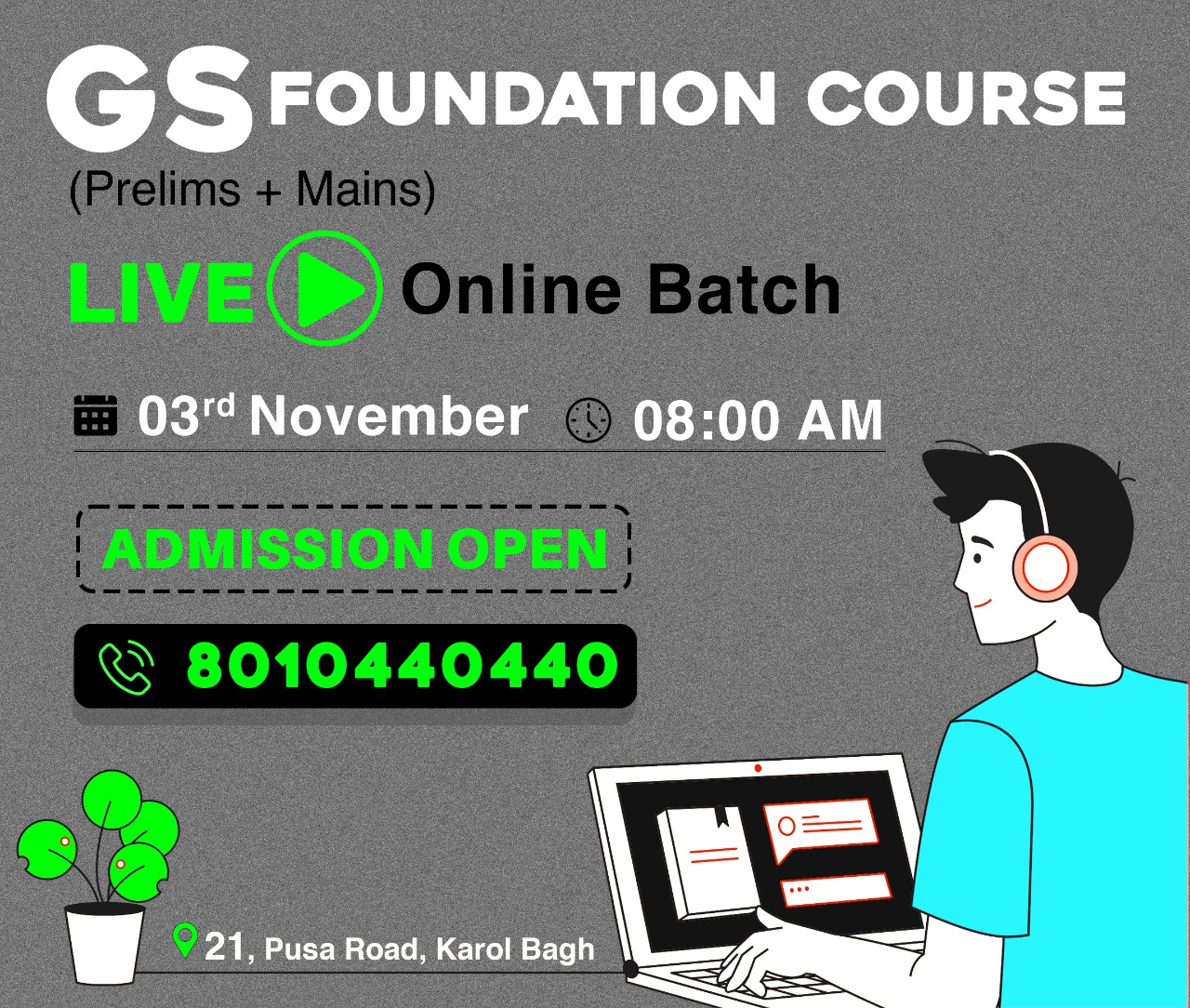
Social Justice
Women Representation in Parliament
For Prelims: Inter-Parliamentary Union, ECI, Social Mobility, MLAs, Article 243D, PRI.
For Mains: Reasons for Low Representation of Women in Parliament.
Why in News?
Recently, the representation of women in parliament in New Zealand crossed the 50% mark.
- According to the Inter-Parliamentary Union, New Zealand is among a half-dozen nations in the world that can claim at least 50% female representation in their parliament by 2022.
- In 1893, New Zealand became the first nation to allow women to vote.
- Other nations include Cuba, Mexico, Nicaragua, Rwanda and the United Arab Emirates.
- Globally, about 26% of lawmakers are women.
What is the Indian Scenario?
- As per the data compiled by the IPU, of which India is a member, women represent 14.44% of the total members of the Lok Sabha.
- As per the latest Election Commission of India (ECI) data:
- As of October 2021, Women represent 10.5% of the total members of the Parliament.
- The scenario for women Members of Legislative Assemblies (MLAs) across all state assemblies in India is even worse, with the national average being a pitiable 9%.
- In the last 75 years of independence, women’s representation in Lok Sabha has not even increased by 10%.
- In electoral representation, India has fallen several places in the Inter-Parliamentary Union’s global ranking of women’s parliamentary presence, from 117 after the 2014 election to 143 as of January 2020.
- India is currently behind Pakistan (106), Bangladesh (98) and Nepal (43) and ahead of Sri Lanka (182).
What are the Reasons for Low Representation?
- Gender stereotypes:
- The role of managing household activities has been traditionally assigned to women.
- Women should be encouraged to move outside their stereotypical roles and participate in the decision-making process of the country.
- Competition:
- Politics, like any other field, is a field of competition. At the end of the day, Women politicians are their competition as well.
- Many of the politicians fear that, in the case of women reservation, their seats can rotationally be reserved for women candidates, thus, making them lose any chance of even fighting from their seats.
- Lack of Political Education:
- Education influences the social mobility of women. Formal education such as provided at educational institutions create opportunities for leadership, and impart leadership essential skills.
- Because of a lack of understanding of politics, they do not know about their basic and political rights.
- Work and Family:
- Uneven distribution of family care responsibilities means that women spend far more time than men in home- and child-care.
- A woman not only has to give her time and effort at time of pregnancy and childbirth, but it continues till the child is dependent on parents for care.
- Lack of Political Networks:
- The lack of openness in political decision-making and undemocratic internal processes pose a challenge for all newcomers, but particularly for women as they tend to lack insider knowledge or political networks.
- Lack of Resources:
- Because of their low proportion in the inner political party structure of India, women fail to gather resources and support for nurturing their political constituencies.
- Women do not get adequate financial support from the political parties to contest the elections.
- Social Conditioning:
- They have to accept the dictates imposed on them and bear the burden of society.
- Public attitudes not only determine how many female candidates win a general election but also directly and indirectly how many are considered and nominated for office.
- Unfriendly Environment:
- Overall political parties’ environment too is not women-friendly, they have to struggle hard and face multi-dimensional issues to create space for them in the party.
- There has been increasing violence in politics. A significant rise in criminalization, corruption, insecurity has driven women out of the political arena.
What are the Government Efforts?
- The Women's Reservation Bill 2008:
- It proposes to amend the Constitution of India to reserve 1/3rd of all seats in the Lower house of Parliament of India, the Lok Sabha, and in all state legislative assemblies for women.
- Reservation for Women in Panchayati Raj Institutions:
- Article 243D of the Constitution ensures participation of women in Panchayati Raj Institutions by mandating not less than one-third reservation for women out of total number of seats to be filled by direct election and number of offices of chairpersons of Panchayats.
- Parliamentary Committee on Empowerment of Women:
- The Committee on Empowerment of Women was constituted for the first time in 1997 during the 11th Lok Sabha of the Parliament for improving the status of women.
- The Members of the Committee are expected to work together for the empowerment of women cutting across party affiliations.
Way Forward
- It is the need of the hour in a country like India to have equal participation of all the sections of society in mainstream political activity therefore necessary steps should be taken to promote it.
- All political parties have to reach a consensus and ensure the passage of the Women's Reservation Bill, which calls for reserving 33 % of seats in Parliament and all state legislative assemblies for women.
- There is a pool of women out there who have been sarpanches, and members of local bodies, with experience of governance at the local level over a period of three decades.
- They are waiting to play a larger role in state assemblies and in Parliament.
- There is a need to implement the proposal of the Election Commission of India (ECI) to make it mandatory for the recognized political parties to ensure putting of minimum agreed percentage for women in State Assembly and Parliamentary elections, so as to allow them to retain the recognition with the Election Commission as political parties.
UPSC Civil Services Examination Previous Year Question
Q. What are the continued challenges for Women in India against time and space? (2019)
Q. Discuss the desirability of greater representation to women in the higher judiciary to ensure diversity, equity and inclusiveness. (2021)
Source: IE


Internal Security
States to have NIA Office by 2024
For Prelims: Terrorism, NIA, State List
For Mains: Challenges to Internal Security Through Communication Networks
Why in News?
Recently, Union Home Minister announced all states in the country will have National Investigation Agency (NIA) offices by 2024 as a strategy to counter terrorism.
- The Minister was addressing a two-day 'Chintan Shivir' organised with the objective to prepare an action plan for the implementation of 'Vision 2047' and 'Panch Pran' announced by India's Prime Minister during the Independence Day Speech.
What are the Highlights of the Address?
- NATGRID:
- States have been urged to utilise the National Intelligence Grid (NATGRID) that was operational now.
- NATGRID brings datasets of 11 agencies on a common platform.
- States have been urged to utilise the National Intelligence Grid (NATGRID) that was operational now.
- Revamping Criminal Justice System:
- Parliament will soon be presented with amendments to the Indian Penal Code (IPC) and Code of Criminal Procedure (CrPC).
- One Data One Entry:
- In order to ensure border and coastal security, border states should coordinate with Central agencies and security forces.
- There was a need for optimal and rational utilisation of internal security resources to fight challenges before the nation.
- One Data One Entry:
- Following the principle of “one data, one entry”, the NIA had been entrusted to maintain a national terror database, the Enforcement Directorate a dataset on financial crimes and the Narcotics Control Bureau (NCB) on narco crimes.
- Amendments to FCRA:
- The amendments to the Foreign Contribution Regulation Act (FCRA) in 2020 successfully prevented the misuse of foreign funding and effective monitoring became possible.
- The FCRA was a mandatory requirement to receive foreign funds.
What are the Issues with the Law-and-Order Situation in India?
- General Administration:
- Various government agencies lack coordination.
- Poor enforcement of laws and general failure of administration
- Problems Related to Police:
- Organisational, infrastructure, and environmental problems
- Unwarranted political interference
- Lack of empowerment of the cutting-edge functionaries
- Lack of modern technology/methods of investigation
- Organisational Behaviour:
- A lack of training
- Entrenched attitudes of arrogance, insensitivity and patronage
- Ethical Issues:
- Different levels of corruption, collusion, and extortion
- Insensitivity to human rights
- Absence of transparent recruitment and personnel policies
- Issues related to Prosecution:
- Public prosecutors do not attract the best talent
- Lack of coordination between the investigation and the prosecution agencies
- Mistrust of police in admitting evidence.
- Problems Related to the Judicial Process:
- A large number of cases are pending
- Low conviction rates
What are the Related Constitutional and Legal Provisions?
- Law and order is a State subject under the Seventh Schedule, the Constitution provided that the Ministry of Home Affairs (MHA) could intervene in matters concerning national security and the Ministry from time to time sent advisories to States.
- It is the primary duty of the State Governments to prevent, detect, register and investigate crime and prosecute the criminals.
- Central Government, however, supplements the efforts of the State Governments by providing them financial assistance for modernization of their Police Forces.
- Further, intelligence inputs are regularly shared by the Central Security and Intelligence Agencies with the State Law Enforcement Agencies to prevent crime and law and order related incidents.
- The National Crime Records Bureau (NCRB), a nodal agency under the MHA, is engaged in the process of collecting, compiling and analysing the crime statistics with a view to help the States to evolve appropriate strategies for better prevention and control of crime.
- Further, the Bureau has established computerized systems at every District Crime Records Bureau (DCRB) and State Crime Records Bureau (SCRB), across the country, under a project viz., 'Crime Criminal Information system (CCIS)'.
What is the National Investigation Agency (NIA)?
- About:
- The NIA is the Central Counter-Terrorism Law Enforcement Agency of India mandated to investigate all the offences affecting the sovereignty, security and integrity of India. It includes:
- Friendly relations with foreign states.
- Against atomic and nuclear facilities.
- Smuggling of arms, drugs and fake Indian currency and infiltration from across the borders.
- The offences under the statutory laws enacted to implement international treaties, agreements, conventions and resolutions of the United Nations, its agencies and other international organisations.
- It was constituted under the National Investigation Agency (NIA) Act, 2008.
- The agency is empowered to deal with the investigation of terror related crimes across states without special permission from the states under written proclamation from the Ministry of Home Affairs.
- The NIA is the Central Counter-Terrorism Law Enforcement Agency of India mandated to investigate all the offences affecting the sovereignty, security and integrity of India. It includes:
- Headquarters: New Delhi
Way Forward
- The nature of crimes is changing, and they are becoming borderless, that is why all States will have to battle these by having a common strategy.
- To formulate and implement this under the spirit of ‘Cooperative Federalism,’ Cooperation, Coordination and Collaboration between the Centre and the States is required.
UPSC Civil Services Examination Previous Year Question
Q. Keeping in view of India’s internal security, analyse the impact of cross-border cyber-attacks. Also, discuss defensive measures against these sophisticated attacks. (2021)
Source: TH


Biodiversity & Environment
Emissions Gap Report 2022: UNEP
For Prelims: Emission Gap Report 2022, Paris Agreement, Pandemic, GHG, COP-26, Initiatives to Reduce Emissions.
For Mains: Emissions Gap Report, UNEP.
Why in News?
Ahead of COP27, the United Nations Environment Programme (UNEP) released a report titled ‘Emissions Gap Report 2022: The Closing Window — Climate Crisis Calls for Rapid Transformation of Societies’.
- This is the 13th edition of the UNEP Emissions Gap Report. It assesses the gap between anticipated emissions in 2030 and levels consistent with the 1.5°C and 2°C targets of the Paris Agreement. Every year, the report features ways to bridge the gap.
What are the Findings?
- The top 7 emitters (China, the EU27, India, Indonesia, Brazil, the Russian Federation and the United States of America) plus international transport accounted for 55% of global GHG emissions in 2020.
- For these countries GHG emissions rebounded in 2021, exceeding pre-pandemic 2019 levels.
- Collectively, G20 members are responsible for 75% of global GHG (Greenhouse Gas Emission) emissions.
- The global average per capita GHG emissions was 6.3 tonnes of CO2 equivalent (tCO2e) in 2020.
- India remains far below the world average at 2.4 tCO2e.
- World is falling short of the goals set forth in the Paris Climate Agreement adopted in 2015, with no credible pathway to 1.5°C in place.
- The Paris Agreement defined a global warming limit of 2°C above pre-industrial levels (preferably 1.5°C), which if exceeded, can result in extreme weather events such as extreme heat waves, droughts, water stress, etc.
- National pledges since COP26 (Glasgow, UK) make a negligible difference to predict 2030 emissions.
What are the Recommendations?
- The world needs to reduce greenhouse gasses by unprecedented levels over the next eight years.
- There is a need for alternative technologies in heavy industry, to reverse the rise in carbon intensity of global steel production.
- Urgent transformation is needed to deliver the enormous cuts needed to limit GHG emissions by 2030.
- Unconditional and conditional NDCs (Nationally Determined Contributions) are expected to reduce global emissions by 5% and 10%, respectively, by 2030, when compared to current policies.
- To be on the most cost-effective path to limiting global warming to 2°C or 1.5°C, these percentages must reach 30% and 45%.
What are the Initiatives to Reduce Emissions in India?
- Bharat Stage-IV (BS-IV) to Bharat Stage-VI (BS-VI) emission norms.
- UJALA scheme.
- International Solar Alliance.
- National Action Plan on Climate Change (NAPCC).
- Ethanol Blending in India by 2025.
- India Updated its NDC.
What is the United Nations Environment Programme?
- About:
- It is a leading global environmental authority established on 5th June 1972.
- It sets the global environmental agenda, promotes sustainable development within the United Nations system, and serves as an authoritative advocate for global environment protection.
- Headquarters:
- Nairobi, Kenya.
- Major Reports:
- Emission Gap Report, Adaptation Gap Report, Global Environment Outlook, Frontiers, Invest into Healthy Planet.
- Major Campaigns:
- Beat Pollution, UN75, World Environment Day, Wild for Life.
UPSC Civil Services Examination Previous Year Question
Prelims
Q. The ‘Common Carbon Metric’, supported by UNEP, has been developed for
(a) assessing the carbon footprint of building operations around the world
(b) enabling commercial fanning entities around the world to enter carbon emission trading
(c) enabling governments to assess the overall carbon footprint caused by their countries
(d) assessing the overall carbon foot-print caused by the use of fossil fuels by the world in a unit time
Ans: (a)
Mains
Q. Discuss global warming and mention its effects on the global climate. Explain the control measures to bring down the level of greenhouse gases which cause global warming, in the light of the Kyoto Protocol, 1997. (2022)
Source: IE

-01.png)

